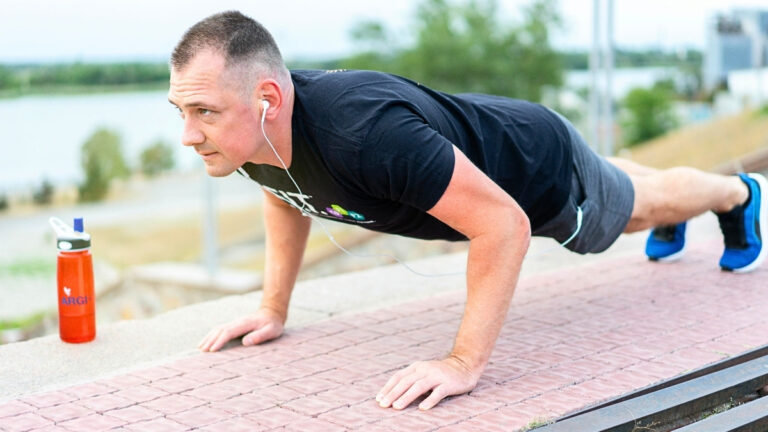He Believed Aging Meant Defeat — But This Routine Erased Years of Weakness (Must See)
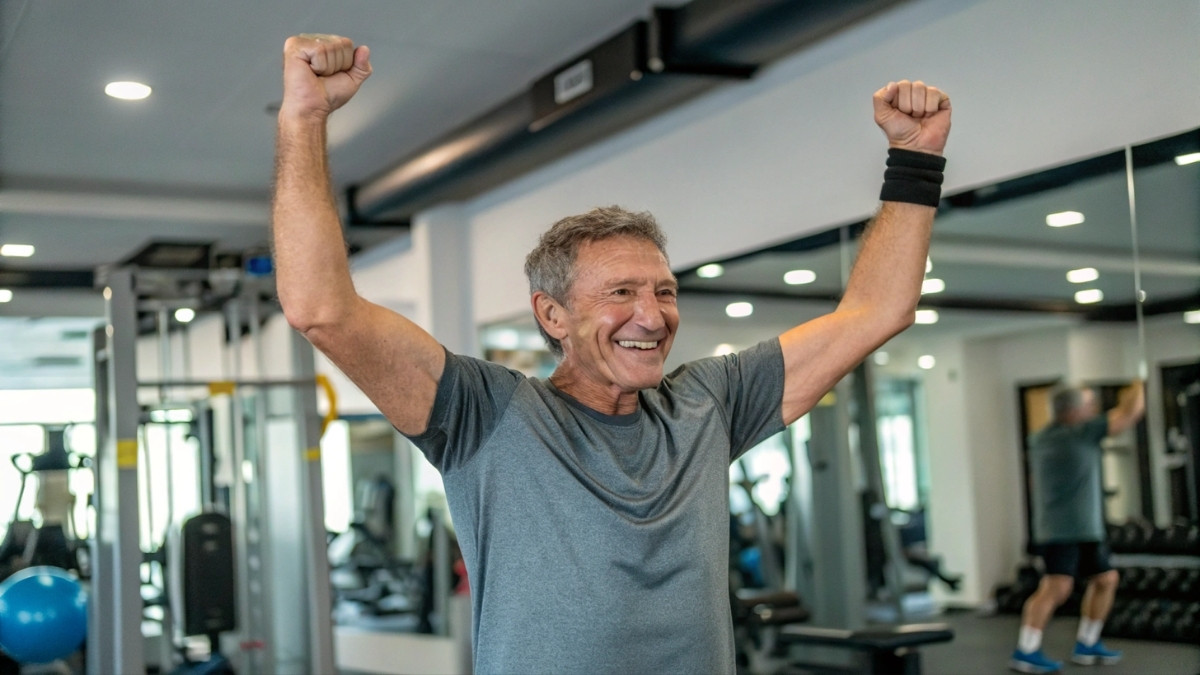
At 68 years old, research participants were 59% weaker than younger adults. But after just six months of strength training, they improved so dramatically they were only 38% weaker, effectively reversing decades of decline. Six months changed everything.
You’ve noticed climbing stairs leaves you winded. Carrying groceries feels harder. You’re weaker, more tired, and convinced aging means defeat. Most people accept this as normal.
But research shows structured exercise like aerobic and strength training has stronger anti-aging effects than casual activity, with measurable reductions in biological age. You don’t have to accept weakness as your future.
This guide reveals 15 evidence-based steps that can reverse biological aging at the cellular level. Resistance training can reverse age-related aspects at the gene level.
Scientists found 179 genes associated with aging that showed remarkable reversal after just six months. Your genes literally express themselves like younger genes when you train with weights.

This isn’t about slowing aging. It’s about reversing it. Strength training for older adults offers muscle mass aging reversal and biological age reduction that you can measure in a lab. The science proves you can reverse aging with strength training. Let’s show you exactly how.
Step 1: Understand the Science—Your Muscles Can Reverse Time
You might think getting weaker with age is inevitable. It’s not. Your muscles can actually reverse time at the cellular level, and science proves it.

Resistance training can slow and reverse changes in muscle fibers associated with aging, even in people who start after age 70. Heavy strength training can reverse several decades of age-related decline in strength and power. This isn’t about maintaining what you have. It’s about getting back what you lost.
Here’s what happens inside your body. When you lift weights, your mitochondria—the power plants in your cells—start working like they did when you were younger. Mitochondrial dysfunction drives aging, but exercise restores it. Even more impressive, your gene expression literally changes back to younger patterns. Scientists found 179 genes associated with aging that reversed after just six months of training.

The numbers are striking. Just 90 minutes of weekly strength training could reverse your biological age by 4 years. Double that to 180 minutes, and you show markers of being 8 years younger. After age 65 for women and 70 for men, muscle power declines faster. But you can stop this decline and reverse it.
Your body wants to be strong. You just need to give it the right stimulus.
Step 2: Start With Heavy-Load Training (Not Light Weights)
Most older adults make one big mistake. They lift weights that are too light. If you want real results, you need to lift heavy.
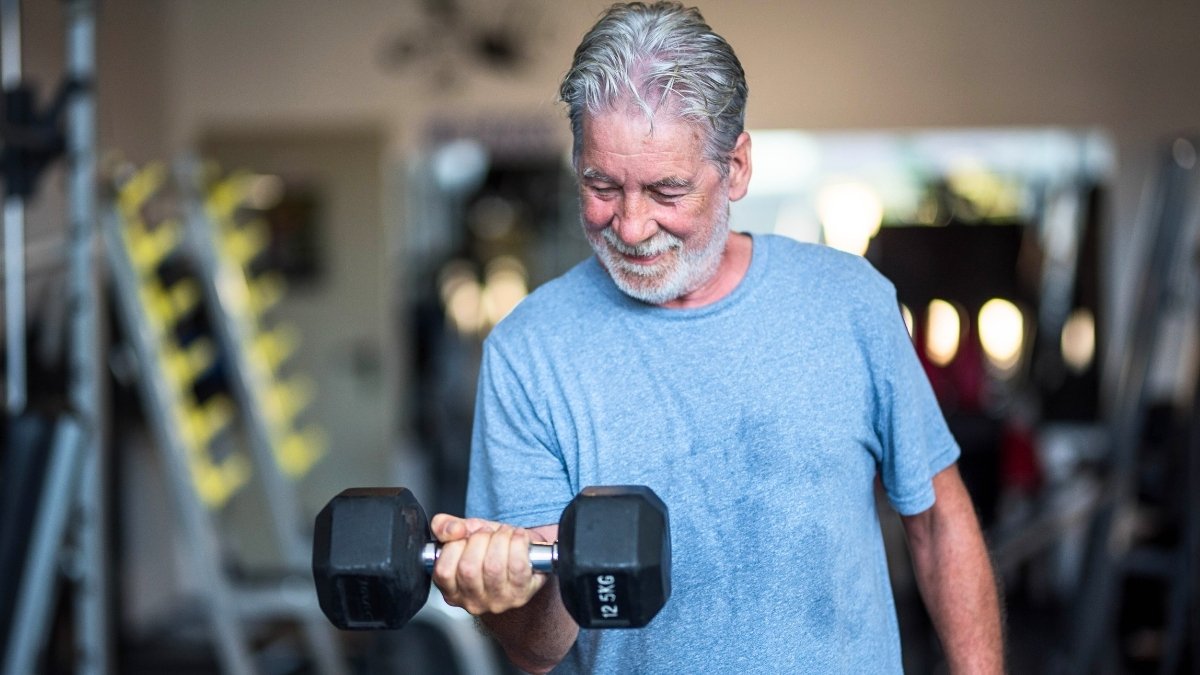
Heavy to very heavy strength training produces larger effect sizes compared to low-moderate training. Light dumbbells won’t cut it. You need resistance that challenges your muscles significantly.
Here’s the protocol that works. Use your 4 repetition maximum (4RM). That’s a weight you can only lift 4 times with good form. Each rep should include a slow 2-3 second eccentric phase (lowering the weight), a 1 second pause, then an explosive concentric phase with maximal intended velocity (pushing the weight up fast). This combination triggers the most muscle adaptation.
For older adults, the leg press is preferred over squats due to technique safety. It’s easier to learn and puts less stress on your joints while still building serious leg strength.

A typical session looks like this. Warm up with 8-10 reps at light weight. Then do 6-8 reps at moderate load. Finally, complete four sets of 4RM with 3-4 minutes rest between sets. That rest period matters. Your muscles need it to recover between heavy sets.
Start with major muscle groups: legs, chest, back. These give you the most benefit for your effort. Master these movements before adding smaller muscle work.
Heavy weights feel intimidating at first. But they’re exactly what your aging muscles need to wake up and grow stronger.
Step 3: Master the Six Essential Movement Patterns
Your body needs to move in six basic ways to stay strong for everyday life. Health experts identify six pillars: squat, hinge, push, pull, carry, and rotational movements. Master these, and you’ll handle everything from climbing stairs to picking up grandkids.
The squat builds leg strength for daily activities. Every time you sit down or stand up, you’re squatting. Start with bodyweight squats or chair stands. Hold onto something if you need balance help.

The hinge movement includes deadlifts and hip thrusts for your posterior chain. That’s your glutes, hamstrings, and lower back. These muscles keep you from stooping forward as you age.
Push movements like overhead press and chest press build your chest and shoulders. Wall push-ups work great if regular push-ups feel too hard. You use pushing every time you open a heavy door or get up from the floor.
Pull movements like rows and pulldowns work your back and biceps. They help you maintain good posture and pull things toward you, like opening a car door or pulling up a blanket.
Carry movements improve your posture, grip, and work your shoulders, upper back, core, and hips. Aim to carry 70% of your body weight. If you weigh 150 pounds, work up to carrying 105 pounds. This makes grocery shopping easier.
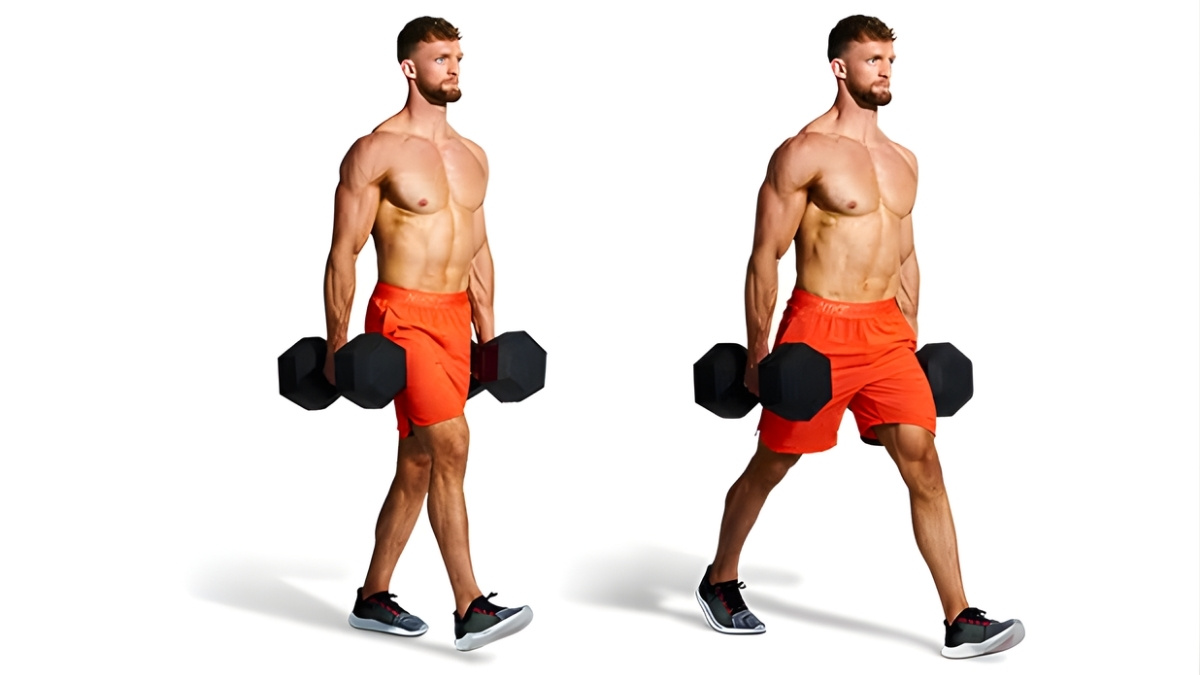
Rotational movements keep your core strong for twisting motions. You rotate when you look behind you while driving or reach across your body.
Start with bodyweight versions. Progress to weighted variations as you get stronger.
Step 4: Train at Least Twice Weekly (Three Times Optimal)
You can’t train once a week and expect results. Your muscles need consistent work to grow stronger and reverse aging.
The CDC recommends older adults strength train at least twice weekly on non-consecutive days. Three times is even better if your schedule allows. This frequency gives your muscles enough stimulus to adapt without overdoing it.

Allow 48-72 hours recovery between sessions. If you train on Monday, wait until Wednesday or Thursday before your next session. Your muscles don’t grow during workouts. They grow during rest when your body repairs the damage you created.
If you’re new to training, start with 10-15 minutes and assess soreness before your next session. Some soreness is normal. Sharp pain is not. Listen to your body.
Progressive overload is essential. That means gradually increasing weight or reps over time. If you lifted 50 pounds last week, try 52 pounds this week. Small increases add up fast.

The science backs this up. Older adults show a 0.5-8.5% increase in maximal force per training session, averaging 2.5% per session. That means every workout makes you measurably stronger. Miss a week, and you lose that momentum.
Consistency beats intensity. Two solid sessions every week for a year will transform your strength more than sporadic hard workouts.
Step 5: Prioritize Protein—Aim for 1.2g Per Kilogram Daily
You’re probably not eating enough protein. Most older adults aren’t. And that’s killing your muscle gains.
Research shows 1.2g protein per kg body weight daily should be considered for preventing muscle deterioration in elderly individuals. The standard RDA of 0.8g/kg may be insufficient for older adults. Your aging body needs more protein to build and maintain muscle than a younger person does.

Here’s what that looks like in real numbers. A 160-pound person needs about 87 grams of protein daily. The old RDA says only 58 grams. That’s a 29-gram difference. That gap means weaker muscles and slower recovery.
Older adults need higher protein doses and more timing precision with exercise to prevent muscle loss. Your muscles have become resistant to protein. You need more of it to trigger the same muscle-building response a 30-year-old gets from less.
Distribute protein evenly throughout the day with 20-30g per meal. Don’t eat 10 grams at breakfast and 60 grams at dinner. Your body can only process so much protein at once. Spread it out so your muscles get a steady supply.

Post-workout protein within 2 hours maximizes synthesis. This is when your muscles are most hungry for nutrients. Include both animal and plant sources. Chicken, fish, eggs, Greek yogurt, beans, and lentils all count.
Track your protein for one week. You’ll probably be surprised how little you’re actually eating.
Step 6: Time Your Protein Around Exercise
When you eat protein matters almost as much as how much you eat. Get the timing wrong, and you’re leaving gains on the table.
Muscle protein synthesis depends on timed administration of amino acids before, during, or after exercise. Post-exercise protein consumption is most critical. Your muscles are primed to absorb nutrients for about two hours after you finish lifting. This window is shorter as you age.

Leucine-rich proteins trigger muscle building signals. Whey protein, eggs, and meat contain high amounts of leucine. This amino acid acts like a switch that turns on muscle growth. Combine protein with carbohydrates to replenish glycogen. Your muscles store carbs as glycogen for energy. Protein plus carbs together work better than protein alone.
Here’s what works best. Have a whey protein shake immediately post-workout. It absorbs fast and gets to your muscles quickly. If you prefer whole foods, eat eggs, Greek yogurt, or lean meats within that 2-hour window. Aim for 20-30g protein per post-workout meal.

A simple post-workout meal: two eggs, a piece of toast, and a banana. That gives you protein, carbs, and about 15 grams of protein. Add a glass of milk for another 8 grams.
Don’t overthink this. Just eat protein soon after training. Your muscles will thank you with faster growth and better recovery.
Step 7: Prioritize Sleep—Your Secret Weapon for Muscle Recovery
You can train hard and eat right, but without sleep, you’re wasting your effort. Sleep is when your muscles actually grow stronger.

During deep sleep, your body releases growth hormones essential for muscle repair and regeneration. This happens mostly in the first few hours of sleep. Skip those hours, and you miss the rebuilding process.
Sleep deficit down-regulates anabolic hormones IGF-1 and testosterone, which play important roles in protein synthesis and muscle mass maintenance. Less sleep means less of these muscle-building hormones.
Sleep quality is a significant predictor of muscle mass, strength, and quality of life in older adults. The research is clear. People who sleep better have more muscle and feel stronger. Aim for 7-9 hours nightly.

Poor sleep accelerates telomere shortening, which is a marker of aging. Your cells age faster when you don’t sleep enough. Chronic sleep deprivation undermines exercise benefits. You can lift weights all you want, but bad sleep cancels out those gains.
Here’s how to fix it. Keep a consistent sleep schedule, even on weekends. Make your bedroom dark and cool, between 65-68°F. Your body sleeps better in cooler temperatures. Avoid screens 1 hour before bed. The blue light messes with your sleep hormones. Limit caffeine after 2pm. It stays in your system longer than you think.
Better sleep isn’t optional. It’s required for muscle growth.
Step 8: Incorporate Active Recovery Days
Rest days don’t mean lying on the couch all day. Your body recovers better when you move lightly between hard training sessions.
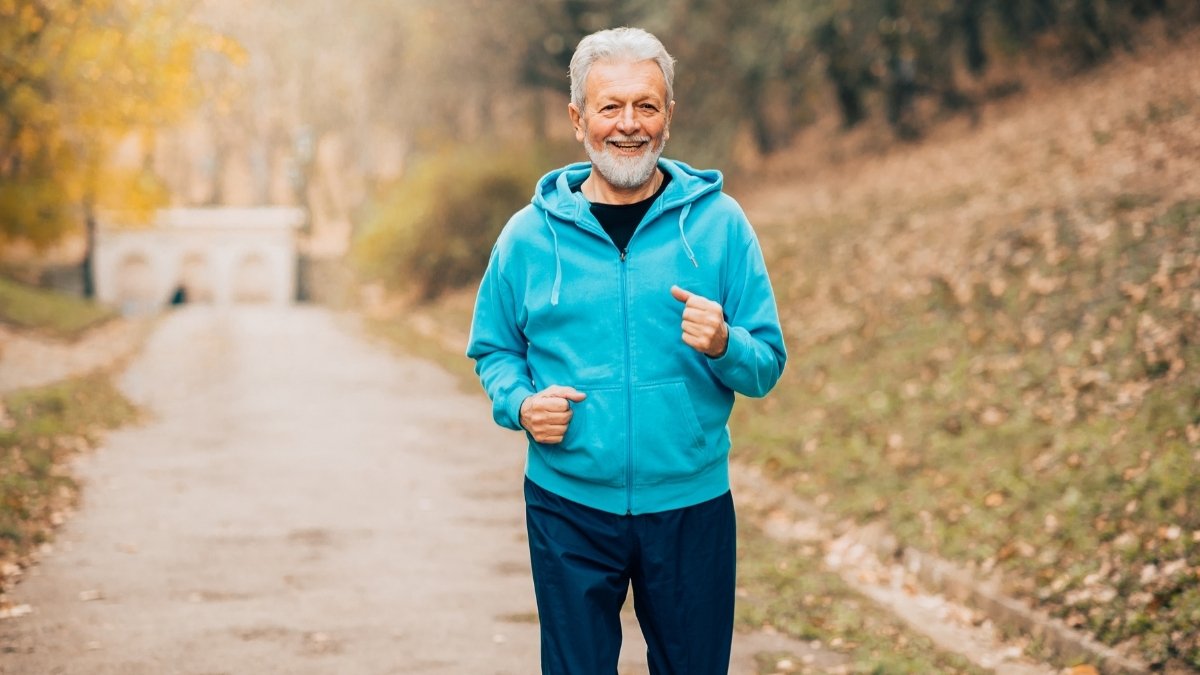
Active recovery like low-intensity movement promotes blood flow and reduces muscle stiffness. When blood flows to your muscles, it brings nutrients and removes waste products. This speeds up recovery. Walking, swimming, and yoga between training days keep your body moving without stress.
Light cardio maintains momentum without overtaxing your muscles. You stay in the habit of moving, but you give your muscles a break from heavy loads. Older adults need longer recovery periods than younger people. Your body takes more time to repair muscle damage. That’s normal.
Here’s what works best. Take 20-30 minute walks on off days. Just a casual pace, nothing intense. Try gentle stretching or yoga. This keeps your joints mobile and reduces stiffness. Swimming or water aerobics takes pressure off your joints while keeping you active. The water supports your body weight.

Tai chi works great for balance and recovery. It’s slow, controlled movement that helps your nervous system recover while improving stability. Pick one or two activities you actually enjoy. You’ll stick with them longer.
Active recovery isn’t lazy. It’s smart training that helps you come back stronger for your next heavy session.
Step 9: Address Cardiovascular Fitness Alongside Strength
Strength training alone isn’t enough. Your heart needs work too. The best recipe for improving physical function is combining walking and resistance training.

Adults should aim for 150 minutes of moderate aerobic activity weekly. That breaks down to 30 minutes of moderate-intensity cardio 5 times per week. Cardio fitness reduces epigenetic aging at the cellular level. Your heart, lungs, and blood vessels stay younger when you do regular cardio.
Balance aerobic and anaerobic training. Strength training is mostly anaerobic. Cardio is aerobic. You need both for complete fitness and maximum age reversal.
The good news is cardio doesn’t have to be complicated. Brisk walking works great. So does cycling and swimming. Pick whatever you’ll actually do consistently. You can split sessions into 10-minute chunks if 30 minutes feels too long. Three 10-minute walks throughout the day count the same as one 30-minute walk.

Interval training reduces fatigue in elderly adults. Try walking fast for 2 minutes, then slow for 2 minutes. Repeat that pattern for 20-30 minutes. This builds your cardiovascular system without exhausting you.
Don’t skip cardio to focus only on weights. Your heart is a muscle too. Keep it strong, and everything else gets easier.
Step 10: Monitor and Track Your Progress
You can’t improve what you don’t measure. Tracking shows you what’s working and keeps you motivated when progress feels slow.
Use 4RM testing to track strength gains. Every 4-6 weeks, test your 4-rep max on key exercises. Write down the weight. When that number goes up, you know you’re getting stronger.
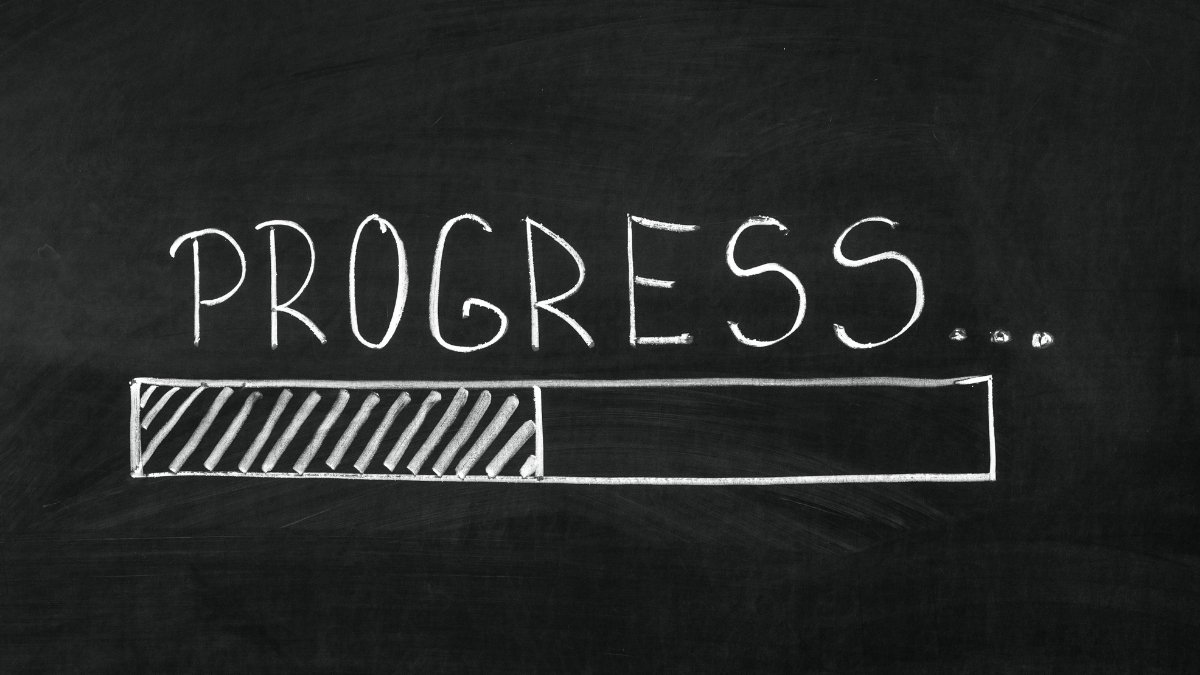
Track the weight lifted, reps completed, and how exercises feel. Some days you’ll lift more. Some days less. The overall trend matters more than one bad session.
Track functional measures too. Count how many chair stands you can do in 30 seconds. Time yourself climbing a flight of stairs. Check your walking speed over 100 feet. These real-world measures show how training improves your daily life.
Celebrate small victories to maintain motivation. Added 5 pounds to your leg press? That’s a win. Walked up stairs without getting winded? Another win. These small wins add up to major transformations.

Keep a weekly strength log. Write down every workout. Take monthly functional assessments using the chair stands and stair tests. Progress photos help too. You see yourself every day, so changes feel invisible. Photos don’t lie.
Set strength benchmarks every 4-6 weeks. This gives you clear goals to work toward. When you hit a benchmark, set a new one. Progress builds momentum.
Step 11: Include Balance and Stability Training
A fall could kill you. That sounds harsh, but it’s true. Falls cause 10-35% mortality in older adults after hip fractures. Balance training can save your life.

Tai chi can reduce falls by 47% according to the American Academy of Orthopaedic Surgeons. That’s nearly half your fall risk gone with one simple practice. Balance work reduces fall risk by training your body to catch itself when you stumble. Single-leg exercises improve stability by forcing each leg to support your full weight.
Here’s what to do. Practice single-leg stands for 30-60 seconds on each leg. Hold onto a chair at first if you need to. Let go as you get stronger. Try heel-to-toe walking like you’re on a tightrope. Walk forward placing one foot directly in front of the other.
Join tai chi or yoga classes designed for older adults. These teach controlled movements that challenge your balance safely. Balance board work adds another level of difficulty once you’ve mastered the basics.

Practice balance exercises every day. They take just 5-10 minutes. Do them while brushing your teeth or waiting for coffee to brew. Stand on one leg while you’re standing anyway.
Your strength won’t matter if you fall and break a hip. Balance training is insurance against the most dangerous risk you face.
Step 12: Build Bone Density Through Weight-Bearing Exercise
Weak bones break easily. Strong bones protect you from fractures that could end your independence. Resistance training can help slow and reverse age-related bone loss.

Regular strength training stimulates bone formation, increasing bone mineral density. When you lift weights, your bones sense the stress and respond by getting denser. This is the same principle that makes your muscles stronger. Axial loading through your spine is crucial for osteoporosis prevention. That means exercises where weight compresses down through your spine.
Progressive resistance is essential. Start light and add weight slowly over months. Your bones need time to adapt, just like your muscles do.
For osteoporosis or osteopenia, include hack squats or horizontal leg press with a reclined back for axial spine loading. These exercises safely load your spine without the balance demands of regular squats. Weight-bearing exercises like squats and lunges work your hips and spine where fractures happen most often.

Gradual progression prevents injury. Don’t jump from 50 pounds to 100 pounds in one week. Add 5 pounds at a time. Your bones need consistent, long-term loading to get denser.
If you have osteoporosis, work with a trainer who knows how to modify exercises safely. Some movements can increase fracture risk if done wrong. Done right, weight training is the best medicine for weak bones.
Step 13: Stay Consistent—Results Compound Over Time
Most people quit too soon. They train for a few weeks, don’t see magic results, and give up. But the real transformation happens when you stick with it.
One study showed sedentary middle-aged women reduced their epigenetic age by 2 years after just 8 weeks of combined training. Eight weeks.

That’s two months to literally become younger at the cellular level. Another study found 12-week progressive strength training reversed sarcopenia stage in participants. Sarcopenia is severe muscle loss from aging. Twelve weeks reversed it.
Benefits accelerate with consistency. Your first month builds a foundation. Your second month builds on that. By month six, you’re a different person. Missing weeks sets you back. Every time you stop for two weeks, you lose some of what you gained.
Here’s how to stay consistent. Schedule sessions like appointments. Put them in your calendar. Treat them as important as a doctor’s visit. Find a workout partner who won’t let you skip.

Join senior fitness classes where people expect to see you. Track consecutive weeks on a calendar. Seeing a long streak motivates you to keep going.
Don’t aim for perfect. Aim for consistent. Two workouts every week for a year beats four workouts a week for two months. Show up even when you don’t feel like it. Those are the sessions that build character and muscle.
Step 14: Manage Stress and Cortisol Levels
Stress is killing your gains. You might not realize it, but chronic stress is breaking down the muscle you’re working so hard to build.
Chronic stress elevates cortisol, which impedes muscle repair and affects sleep quality. High cortisol breaks down muscle tissue for energy. Your body is literally eating your muscles when stress stays high.

Stress management enhances recovery. Lower stress means better sleep, faster muscle repair, and more energy for workouts.
Mindfulness supports training results. When you’re calm, your body can focus on building instead of surviving. Here’s what actually works. Do daily meditation or deep breathing for 10-15 minutes. Sit quietly and focus on your breath. When your mind wanders, bring it back to breathing. This lowers cortisol fast.
Take nature walks. Being outside in green spaces reduces stress hormones better than walking on a treadmill. Try progressive muscle relaxation. Tense each muscle group for 5 seconds, then release. Start with your toes and work up to your face.

Adequate sleep reduces cortisol naturally. Poor sleep spikes cortisol, which makes sleep worse. It’s a bad cycle. Break it by prioritizing sleep like we covered in Step 7.
You can’t out-train chronic stress. Manage your stress, or watch your muscle gains disappear no matter how hard you lift.
Step 15: Get Medical Clearance and Consider Professional Guidance
Don’t start lifting heavy weights without talking to your doctor first. This step could save you from serious injury or worse.

Consult your physician before starting any strength training program. Your doctor knows your health history, medications, and conditions that might affect how you train. Get a physical assessment. Your doctor can identify issues like high blood pressure, heart problems, or joint damage that need special attention.
Consider a certified trainer experienced with older adults. They know how to modify exercises for your body and teach proper form. Proper form prevents injury. One wrong move with heavy weight can hurt you for months. Work with a certified personal trainer or attend a beginner strength training class to learn proper technique. A few sessions with a pro can teach you what you need to know.
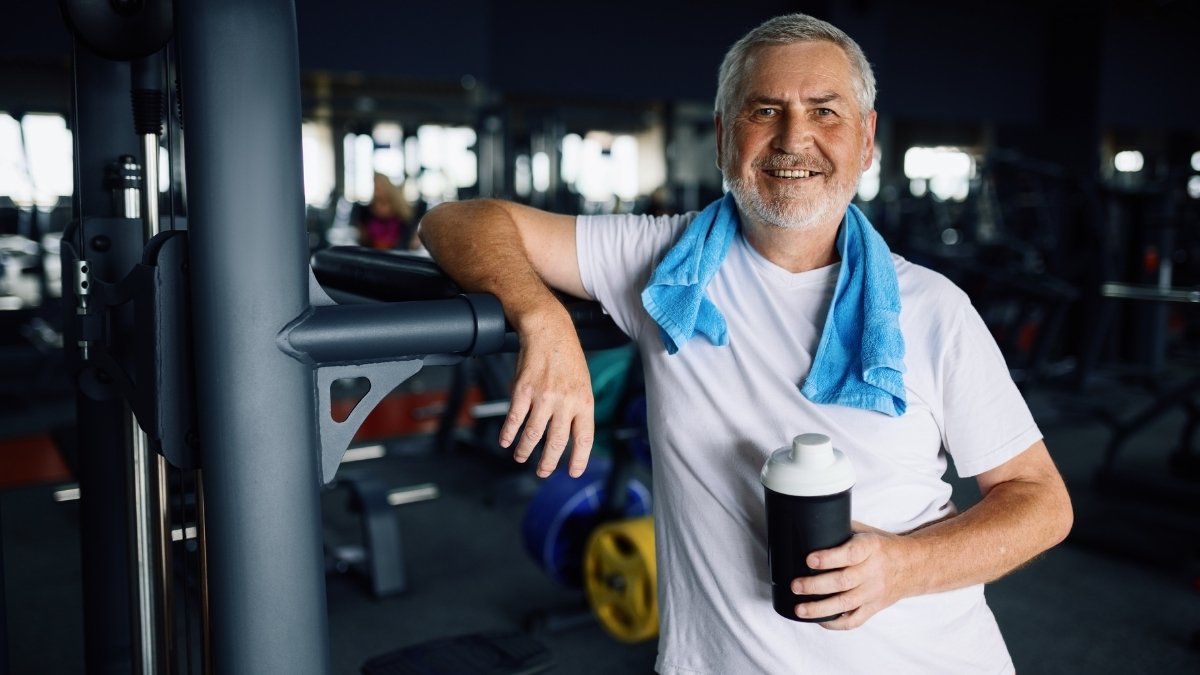
If you’re recovering from an injury, consider working with a physical therapist first. They can help you build strength safely around old injuries. Join structured programs like SilverSneakers. These programs are designed specifically for older adults and often include professional guidance.
Yes, professional help costs money. But it costs less than a hospital visit from doing exercises wrong. Invest in learning the right way from the start. Your body will thank you.
At the Last,
You now have the complete roadmap to reverse biological aging through strength training. The science is clear and the results are real. Research proves that six months of resistance training improved strength by approximately 50% in older adults.
Even more impressive, 179 genes showed remarkable reversal to younger expression patterns. Your body can literally become younger.

This isn’t theory. It’s not hope. It’s proven biology that works for anyone willing to do the work.
Start this week with Step 1: understand the science and commit to Step 4’s twice-weekly training schedule. Don’t wait for Monday or next month or when you feel ready. Start now. Remember, it’s never too late. People who start resistance training after age 70 still experience profound benefits. Your age right now doesn’t matter. What matters is what you do next.
Pick up heavy weights. Eat enough protein. Sleep well. Stay consistent. These aren’t complicated steps. They’re simple actions that create powerful results when you do them week after week.
With consistent strength training for older adults, proper protein intake, and adequate recovery, you can reverse aging with strength training and reclaim the vitality you thought was lost forever. Your stronger future starts today.





